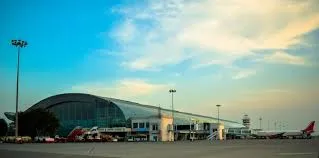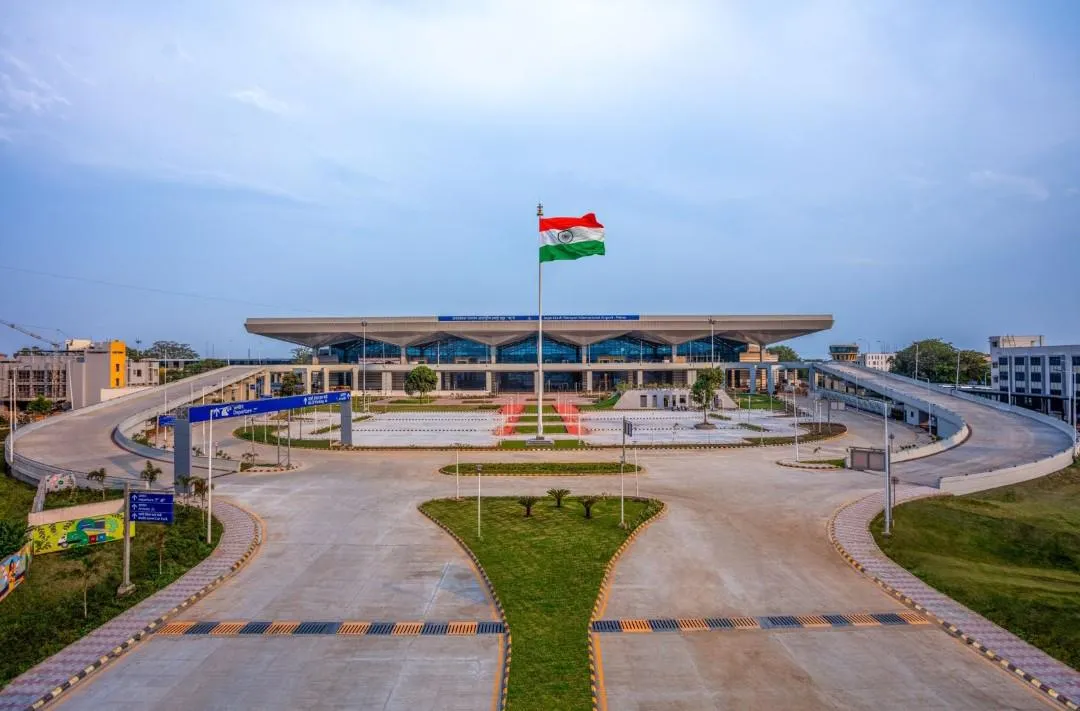Table of Contents
The Indian Aviation Industry: Soaring to New Heights
Introduction
India's aviation industry stands as one of the world's fastest-growing aviation markets, transforming from a niche sector serving the elite to a mass transportation medium connecting the nation's diverse geography. With over 376 million passengers handled at Indian airports in financial year 2024, the industry has emerged as a critical pillar of India's economic infrastructure, facilitating trade, tourism, and regional connectivity across the subcontinent.
The sector's remarkable growth trajectory reflects India's economic dynamism and the government's sustained efforts to democratize air travel through policy reforms, infrastructure development, and market liberalization. From bustling metropolitan hubs to remote tier-2 cities, aviation has become the backbone of India's transportation revolution.
Market Overview and Structure
The Indian aviation landscape is characterized by its scale and rapid expansion. The fleet of Indian carriers comprises more than 800 planes, including over 60 wide-body aircraft, with operations spanning 157 airports across the country as of late 2024. This infrastructure supports a diverse ecosystem of domestic and international carriers, each serving distinct market segments.
The industry's growth momentum continues into 2025, with three new airlines set to launch: Shankh Air, Air Kerala, and Alhind Air, indicating sustained investor confidence in the sector's potential. This expansion comes at a time when the government is actively working to have 200 operational airports by 2025, up from 157 airports at present.
Major Airlines and Market Leaders
IndiGo: The Dominant Force
IndiGo leads the domestic market with approximately 62 percent market share as of financial year 2024, establishing itself as not just India's largest carrier but one of the world's most significant low-cost airlines. As of March 2025, IndiGo operates a fleet of 437 aircraft, with around 78% of the fleet consisting of new-generation aircraft such as the Airbus A320neo and A321neo, maintaining an average fleet age of just five years.
The airline's expansion strategy extends beyond domestic operations. IndiGo has placed a firm order for 30 Airbus A350-900 aircraft to expand its international network to long-haul destinations, positioning itself for significant growth in international markets. IndiGo is expected to have around 600 aircraft in service by 2030, potentially placing it among the world's largest carriers by fleet size.
Other Major Players
Air India: Following its acquisition by the Tata Group, Air India has undergone substantial transformation. Air India's 2025 fleet comprises a mix of narrow-body and wide-body aircraft, catering to domestic, regional, and intercontinental routes, positioning it as India's flagship international carrier.
SpiceJet: The airline has faced operational challenges in recent years. As of September 2024, due to financial constraints and legal reasons, SpiceJet operates 20 aircraft while others remain grounded, though the airline has indicated plans to return grounded aircraft to service.
Emerging Carriers: Airlines like Akasa Air, Vistara (now merged with Air India), and Go First have contributed to market competition, though with varying degrees of success and operational stability.
Fleet Composition and Aircraft Orders
The Indian aviation fleet reflects the industry's focus on fuel efficiency and modern technology. The sector operates a diverse mix of aircraft types, from regional turboprops serving smaller cities to wide-body jets connecting India to global destinations.
Current fleet composition includes primarily Airbus A320 family aircraft for domestic and short-haul international operations, Boeing 737s across various airlines, regional aircraft like the ATR series and Bombardier Q-400s for connectivity to smaller cities, and wide-body aircraft including Boeing 777s, 787s, and Airbus A330s for long-haul international routes.
The industry has placed substantial orders for new aircraft to meet growing demand. Beyond IndiGo's A350 order, Indian carriers have collectively ordered hundreds of narrow-body aircraft to replace aging fleets and support expansion plans.
Airport Infrastructure and Development
Major Airports and Traffic
India's airport infrastructure spans from world-class international hubs to regional facilities serving smaller communities. All six major airports witnessed impressive growth in 2024, with Delhi leading the way in passenger traffic.
The country's primary airports include:
Indira Gandhi International Airport (Delhi): India's busiest airport, serving as a major international gateway and domestic hub with over 70 million passengers annually.
Chhatrapati Shivaji Maharaj International Airport (Mumbai): The commercial capital's primary airport, handling significant international and domestic traffic despite capacity constraints.
Kempegowda International Airport (Bangalore): A major technology hub gateway serving India's Silicon Valley with growing international connectivity.
Chennai International Airport: South India's primary hub with substantial domestic and international operations.
Kolkata and Hyderabad airports round out the major metropolitan gateways, each serving millions of passengers annually.
Airport Construction and Expansion
The government has embarked on an ambitious airport development program. New airports under construction include facilities in major cities like Navi Mumbai, Goa (Mopa), and Jewar (Greater Noida), regional airports in tier-2 and tier-3 cities under the UDAN scheme, and expansion projects at existing major airports to increase capacity.
Airport Management Companies
The sector features a mix of public and private airport operators. Airports Authority of India (AAI) continues to manage most smaller and regional airports, while private players like GMR Group (operating Delhi and Hyderabad airports), GVK Group (Mumbai), and Bangalore International Airport Limited manage major hubs. The Ministry of Civil Aviation is developing Public-Private Partnership (PPP) modalities for the privatisation of 25 airports under the National Monetization Pipeline.
Passenger and Cargo Traffic
Passenger Statistics
The Indian aviation market has shown remarkable resilience and growth. Over 13.21 crore (132.1 million) passengers were carried by domestic flights in 2024 (till October), indicating the sector's robust recovery and continued expansion.
The passenger mix includes domestic travelers comprising the majority of traffic, driven by economic growth and increased affordability, business travelers connecting major commercial centers, leisure travelers exploring India's diverse tourism offerings, and international passengers using India as both a destination and transit hub.
Cargo Operations
Air cargo plays a crucial role in India's logistics ecosystem, particularly for time-sensitive and high-value goods. The sector handles pharmaceuticals and medical equipment, leveraging India's position as a global pharmaceutical hub, electronics and technology products, agricultural exports including spices, tea, and fresh produce, e-commerce packages supporting India's digital economy boom, and textiles and handicrafts for international markets.
International Connectivity
India's international aviation connectivity continues to expand, with routes to major global destinations including the Middle East (Dubai, Doha, Abu Dhabi serving as key hubs), Southeast Asia (Singapore, Bangkok, Kuala Lumpur), Europe (London, Frankfurt, Paris with growing direct connectivity), North America (New York, San Francisco, Toronto), and intra-regional connections within South Asia.
Security and Safety
Airport security in India adheres to international standards with multi-layered screening processes, advanced baggage screening systems, biometric identification systems at major airports, coordination with intelligence agencies for threat assessment, and regular security audits and updates to protocols.
The Directorate General of Civil Aviation (DGCA) oversees safety regulations, aircraft certification, pilot licensing and training standards, maintenance requirements, and incident investigation procedures.
Government Involvement and Policy Framework
The Indian government plays a pivotal role in aviation development through the Ministry of Civil Aviation, which formulates policy and oversees sector development. Key government initiatives include:
UDAN (Ude Desh ka Aam Nagrik): This flagship scheme aims to make flying affordable for common citizens while connecting underserved regions.
Regulatory Framework: The DGCA ensures safety and operational standards while promoting industry growth.
Infrastructure Investment: Significant government investment in airport infrastructure and air traffic management systems.
Foreign Direct Investment: 100% FDI is permitted in scheduled air transport services, encouraging international investment.
Digital India Integration: Implementation of digital systems for seamless passenger experience and operational efficiency.
Financial Performance and Revenue
The Indian aviation industry generates substantial revenue across multiple streams. The sector's annual revenue encompasses passenger airline operations contributing the largest share through domestic and international ticket sales, cargo operations generating significant revenue from freight services, airport operations including aeronautical and non-aeronautical revenue, maintenance, repair, and overhaul (MRO) services, and ground handling and other auxiliary services.
The sector has attracted FDI worth ₹26,787 crore (US$ 3.93 billion) between April 2000-December 2024, indicating sustained international investor interest.
Despite periodic challenges related to fuel costs, regulatory changes, and external factors like the COVID-19 pandemic, the industry has demonstrated remarkable resilience and recovery capability.
Challenges and Opportunities
Current Challenges
The industry faces several operational and structural challenges including high fuel costs impacting profitability margins, infrastructure constraints at major airports during peak hours, skilled workforce shortage in technical and operational roles, environmental concerns requiring sustainable aviation fuel adoption, and regulatory complexities in international operations.
Growth Opportunities
Significant opportunities exist for continued expansion through tier-2 and tier-3 city connectivity under government schemes, cargo sector growth supporting e-commerce and exports, international route expansion as travel demand recovers, technology adoption for operational efficiency and passenger experience, and sustainable aviation initiatives positioning India as a responsible aviation market.
Future Outlook and Industry Projections
The Indian aviation industry's future appears exceptionally promising, driven by several favorable factors. The sector is positioned to benefit from India's demographic dividend with a young, aspirational population, continued economic growth increasing disposable income, government support through infrastructure investment and policy reforms, technological advancement improving operational efficiency, and growing international business and tourism ties.
Industry projections suggest continued robust growth in passenger traffic, fleet expansion across all major carriers, new route development both domestically and internationally, airport infrastructure development keeping pace with demand, and India's emergence as a significant global aviation hub.
The government's vision of transforming India into a global aviation hub appears increasingly achievable, with initiatives to position major Indian airports as international transit points, develop India as an MRO hub for South Asian carriers, attract international airlines to establish Indian operations, and create aviation manufacturing capabilities under the Make in India program.
Conclusion
India's aviation industry represents one of the most dynamic and rapidly evolving sectors in the global economy. From its humble beginnings as a niche transportation mode, it has transformed into a mass market industry serving hundreds of millions of passengers annually while contributing significantly to economic growth, employment generation, and regional connectivity.
The combination of strong domestic demand, supportive government policies, private sector innovation, and infrastructure development creates a compelling foundation for continued growth. As India aspires to become a developed economy, its aviation sector will undoubtedly play a crucial role in connecting the nation internally and integrating it with the global economy.
The challenges ahead, while significant, are manageable through coordinated efforts between government, industry, and other stakeholders. The industry's track record of resilience and adaptation, combined with India's inherent growth potential, suggests that the best years for Indian aviation may still lie ahead.
With ambitious expansion plans, technological adoption, and a commitment to making aviation accessible to all segments of society, India's aviation industry is truly poised to soar to new heights in the coming decade.









